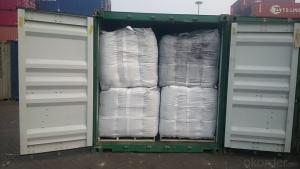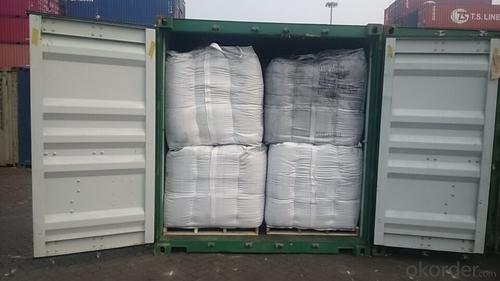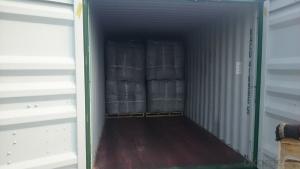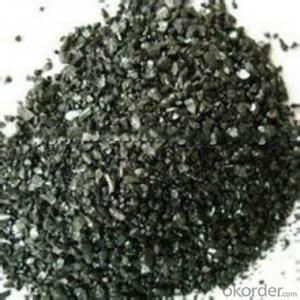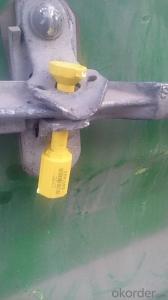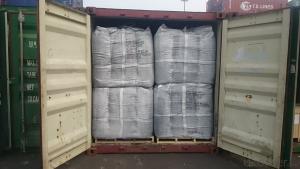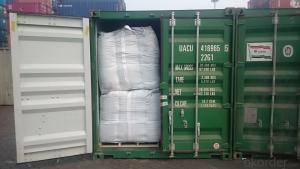GPC with lower Sulphur0.03% max with Moisture 0.5%
- Loading Port:
- Tianjin
- Payment Terms:
- TT OR LC
- Min Order Qty:
- 22 m.t.
- Supply Capability:
- 5000 m.t./month
OKorder Service Pledge
OKorder Financial Service
You Might Also Like
Introduction:
GPC has good characteristics with low ash, low resistivity, low sulphur, high carbon and high density. It is the best material for high quality carbon products. It is used as carbon additive in steel industry or fuel.
Features:
1.Our strong team provide you reliable service that make you feel purchasing is more easier
2. We ensure that we can supply capability with competitive price.
3. Work strictly to guarantee product quality,
4. Highest standard of integrity. Guarantee customer's benefit.
5. Supplying Pet Coke, Met coke, Foundry Coke, Carbon Raiser etc.
Specifications:
F.C.% | 95MIN | 94MIN | 93MIN | 92MIN | 90MIN | 85MIN | 84MIN |
ASH % | 4MAX | 5MAX | 6 MAX | 6.5MAX | 8.5MAX | 12MAX | 13MAX |
V.M.% | 1 MAX | 1MAX | 1.0MAX | 1.5MAX | 1.5MAX | 3 MAX | 3 MAX |
SULFUR % | 0.3MAX | 0.3MAX | 0.3MAX | 0.35MAX | 0.35MAX | 0.5MAX | 0.5MAX |
MOISTURE % | 0.5MAX | 0.5MAX | 0.5MAX | 0.5MAX | 0.5MAX | 1MAX | 1MAX |
Pictures
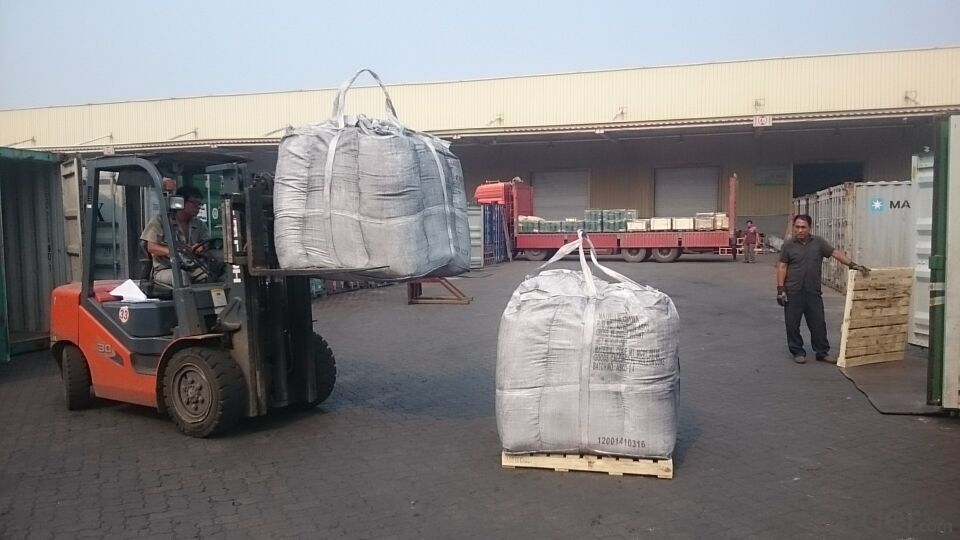
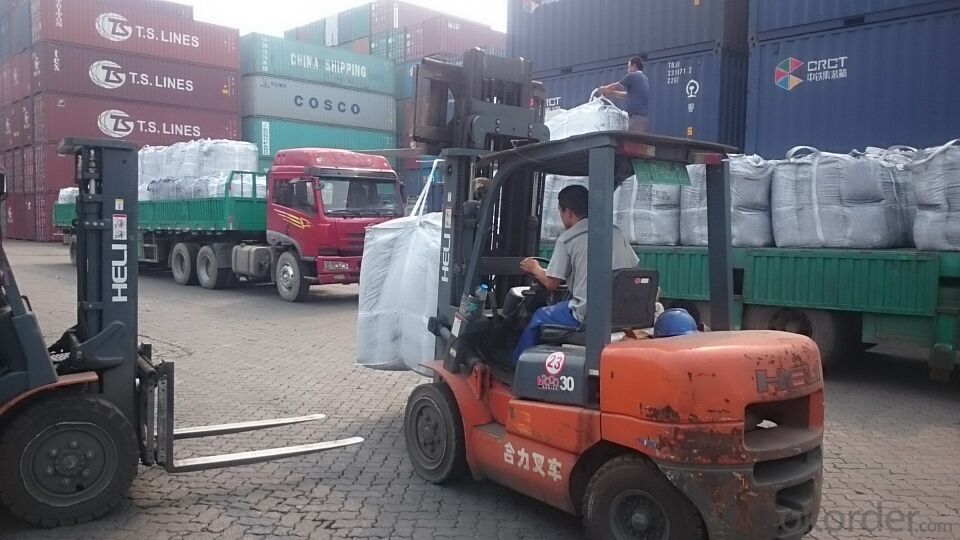

FAQ:
1. Your specification is not very suitable for us.
Please offer us specific indicators by TM or email. We will give you feedback as soon as possible.
2. When can I get the price?
We usually quote within 24 hours after getting your detailed requirements, like size, quantity etc. .
If it is an urgent order, you can call us directly.
3. Do you provide samples?
Yes, samples are available for you to check our quality.
Samples delivery time will be about 3-10 days.
4. What about the lead time for mass product?
The lead time is based on the quantity, about 7-15 days. For graphite product, apply Dual-use items license need about 15-20 working days.
5. What is your terms of delivery?
We accept FOB, CFR, CIF, EXW, etc. You can choose the most convenient way for you. Besides that,
we can also shipping by Air and Express.
6. Product packaging?
We are packed in bulk ship or in ton bag or placing in container or according to your requirements.
7. Notice
please note that the price on Alibaba is a rough price. The actual price will depends on raw materials, exchange rate wage and your order quantity .Hope to cooperation with you, thanks !
- Q: Something that seems to be used in the locomotive brake system. I haven't seen it, either. Who knows? It's better for the locomotive system to go back. Thank you!!
- When the skateboard wear to the limit, only in the maintenance of the daily locomotive can be replaced, so that although it is more troublesome, but it is always better than the replacement of contact wire.
- Q: What are the impacts of carbon emissions on the stability of mountains?
- Mountains are significantly affected by carbon emissions, which have various negative consequences on their stability. One major impact is the acceleration of global warming, resulting in the rapid melting of glaciers and permafrost. Since mountains house numerous glaciers, the rising temperatures cause them to melt at an alarming rate. This melting process can lead to mountain destabilization, increasing the occurrence of landslides and rockfalls. In addition, carbon emissions also contribute to the acidification of rainwater. This acid rain can erode rocks and soil in mountains, weakening their stability. Consequently, this erosion can cause slope instability, making mountains more prone to landslides and other forms of mass movements. Furthermore, carbon emissions play a role in altering precipitation patterns. Mountain ecosystems heavily rely on a delicate balance of rainfall and snowfall. However, the impact of climate change, caused by carbon emissions, disrupts this balance and results in changed precipitation patterns. Consequently, this alteration can lead to increased water runoff and a decrease in snowpack, both of which contribute to mountain destabilization. Moreover, the indirect impacts of carbon emissions on mountain stability can be seen through changes in vegetation patterns. With rising temperatures, plant species tend to migrate to higher altitudes in search of cooler climates. This migration can result in the loss of vegetation in lower elevation areas, which are crucial in stabilizing slopes and preventing erosion. The absence of vegetation cover leads to increased soil erosion, making mountains more vulnerable to landslides and other erosive processes. In conclusion, carbon emissions have severe consequences on the stability of mountains. The acceleration of global warming, acidification of rainwater, altered precipitation patterns, and changes in vegetation patterns all contribute to the destabilization of mountains. It is vital to reduce carbon emissions and mitigate climate change to protect and preserve these majestic natural formations.
- Q: Where are carbon fiber sheets and carbon fiber sheets used?
- Carbon fiber is an inorganic material with good rigidity and heat resistance. Carbon fiber resin composite is a kind of plastic. It is easy to process and belongs to excellent plastics in plastics.Compared with steel, carbon fiber has the greatest advantages of low density, high strength, corrosion resistance and so on. But there are also shortcomings, the biggest drawback is poor processability. It's usually a molding (hand, roll, winding, molding and pultrusion).Carbon fiber is a brittle material, but it has high strength and is usually not used alone. But as a fiber reinforcement, it can be added to the resin matrix to improve the properties of the resin and become a high-performance composite.
- Q: What is carbon offsetting in the energy sector?
- Carbon offsetting in the energy sector refers to the practice of compensating for the greenhouse gas emissions produced by energy generation and consumption activities. It involves investing in projects or initiatives that reduce or remove carbon dioxide (CO2) or other greenhouse gas emissions from the atmosphere, with the aim of balancing out the emissions being released into the atmosphere. The energy sector is a significant contributor to global greenhouse gas emissions, particularly through the burning of fossil fuels such as coal, oil, and natural gas. Carbon offsetting in this sector aims to mitigate the environmental impact of these emissions by funding projects that promote renewable energy, energy efficiency, and other carbon reduction measures. There are various types of projects that can be supported through carbon offsetting in the energy sector. For example, investments can be made in renewable energy projects like wind farms, solar power plants, or hydropower facilities, which generate clean energy without emitting greenhouse gases. These projects help to displace fossil fuel-based energy sources, reducing overall emissions from the energy sector. Additionally, energy efficiency projects can be supported through carbon offsetting. These initiatives focus on reducing energy consumption by implementing energy-efficient technologies, improving insulation, or optimizing industrial processes. By reducing the amount of energy needed, these projects indirectly lead to lower greenhouse gas emissions. Furthermore, carbon offsetting in the energy sector can also involve the support of initiatives that remove carbon dioxide from the atmosphere. These projects often include reforestation or afforestation efforts, which involve planting trees or restoring degraded forests. Trees absorb and store carbon dioxide through photosynthesis, helping to offset emissions and counteract climate change. Overall, carbon offsetting in the energy sector plays a crucial role in transitioning to a more sustainable and low-carbon future. By investing in projects that reduce or remove greenhouse gas emissions, it allows individuals, organizations, and governments to take responsibility for their carbon footprint and contribute to global efforts in combating climate change.
- Q: What's the difference between blue and red Panasonic batteries (carbon)?
- Blue is leak, proof, general, Purpose, general use battery (leak proof)Red is the long life long life battery (suitable for watches and clocks and other small power appliances)And heavy duty green seems to be good for high power appliances, such as toy cars
- Q: What is carbon nanocomposite?
- Carbon nanocomposite refers to a type of material that combines carbon nanotubes or graphene with a matrix material, such as polymers or metals, to form a composite material. The carbon nanotubes or graphene are typically added in small amounts, often in the form of nanoparticles, to enhance the mechanical, electrical, and thermal properties of the composite material. Carbon nanotubes are cylindrical structures made up of carbon atoms arranged in a hexagonal lattice, while graphene is a single layer of carbon atoms arranged in a two-dimensional lattice. These carbon-based materials possess exceptional properties, such as high strength, electrical conductivity, and thermal conductivity. When incorporated into a composite material, these properties can be transferred to the overall structure, resulting in improved performance. The use of carbon nanocomposites has been explored in various industries and applications. In aerospace, for example, these materials have been investigated for their lightweight and high-strength properties, which could potentially enhance the fuel efficiency and durability of aircraft components. In electronics, carbon nanocomposites have shown promise for developing high-performance sensors, conductive films, and energy storage devices. Additionally, they have been studied for their potential applications in medical devices, automotive parts, and energy storage systems. Overall, carbon nanocomposites offer the opportunity to create materials with enhanced properties by leveraging the unique characteristics of carbon nanotubes or graphene. However, the production and scalability of these materials still pose challenges, and further research is needed to optimize their performance and cost-effectiveness for various applications.
- Q: How does carbon affect the preservation of historical artifacts?
- Carbon can have both positive and negative effects on the preservation of historical artifacts. On one hand, carbon-based materials such as paper, wood, and textiles are susceptible to degradation over time. These artifacts can be easily affected by environmental factors such as temperature, humidity, and exposure to pollutants, leading to their decay. Carbon-based materials can also be attractive to pests like insects and rodents, further accelerating their deterioration. On the other hand, carbon-based materials like charcoal and carbonates can play a crucial role in the preservation of artifacts. Charcoal, for example, can be used to date artifacts through carbon dating, providing valuable insights into their age and historical significance. Carbonates, such as calcium carbonate found in limestone, can act as protective coatings, forming a barrier against environmental factors and preventing further decay. Moreover, carbon-based conservation treatments, such as consolidation with adhesives or impregnation with polymers, can help stabilize and strengthen fragile artifacts. These treatments can increase the artifact's resistance to environmental factors and provide structural support, extending its lifespan for future generations. It is important to note that while carbon-based materials can impact the preservation of historical artifacts, other factors like light exposure, handling, and storage conditions also play significant roles. Therefore, a comprehensive preservation strategy should consider all these factors to ensure the longevity and conservation of these valuable historical artifacts.
- Q: How does carbon affect the electrical conductivity of materials?
- Carbon can significantly affect the electrical conductivity of materials due to its unique electronic properties. Carbon atoms, when bonded together in a specific arrangement, can form different allotropes such as graphite, diamond, and fullerenes, each with distinct electrical conductive properties. Graphite, for example, is composed of layers of carbon atoms arranged in a hexagonal lattice structure. Within each layer, carbon atoms form strong covalent bonds, resulting in a stable structure. However, between the layers, weak van der Waals forces exist, allowing for easy movement of electrons in the plane of the layers. This delocalization of electrons in graphite leads to its high electrical conductivity, as the free electrons can move freely and carry electrical charges. On the other hand, diamond, another allotrope of carbon, has a three-dimensional covalent network structure. In this structure, each carbon atom forms four strong covalent bonds with its neighboring atoms, resulting in a highly rigid and stable lattice. The absence of free electrons in diamond restricts the movement of electrical charges, making it an insulator. Fullerenes, which are spherical carbon molecules, can have varying electrical conductive properties depending on their structure. Some fullerenes can behave as semiconductors, meaning their electrical conductivity can be manipulated by introducing impurities or applying external stimuli. In addition to these allotropes, carbon can also be used as a dopant in certain materials to enhance their electrical conductivity. For instance, doping silicon with small amounts of carbon can improve its electrical conductivity, resulting in materials suitable for electronic devices. Overall, carbon's influence on electrical conductivity is highly dependent on its structure and arrangement within a material. Understanding the different forms and properties of carbon can help engineers and scientists design materials with desired electrical conductive characteristics for various applications.
- Q: How is carbon dioxide released into the atmosphere?
- Carbon dioxide is released into the atmosphere through various natural and human activities. Natural processes like volcanic eruptions and the decomposition of organic matter release carbon dioxide. However, human activities such as burning fossil fuels, deforestation, and industrial processes are the primary sources of carbon dioxide emissions into the atmosphere.
- Q: How does carbon impact the availability of sustainable development policies?
- Carbon impacts the availability of sustainable development policies by directly contributing to climate change. The excessive emission of carbon dioxide and other greenhouse gases from human activities leads to global warming, which in turn affects natural resources, ecosystems, and communities. To mitigate the negative impacts of carbon, sustainable development policies aim to reduce carbon emissions, promote renewable energy sources, and encourage sustainable practices. By addressing carbon emissions, these policies help create a more sustainable future by preserving resources, minimizing environmental degradation, and fostering social and economic well-being.
Send your message to us
GPC with lower Sulphur0.03% max with Moisture 0.5%
- Loading Port:
- Tianjin
- Payment Terms:
- TT OR LC
- Min Order Qty:
- 22 m.t.
- Supply Capability:
- 5000 m.t./month
OKorder Service Pledge
OKorder Financial Service
Similar products
Hot products
Hot Searches
